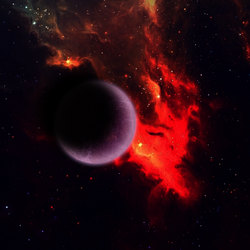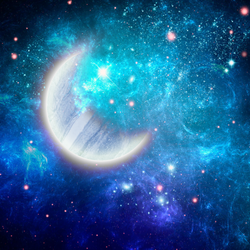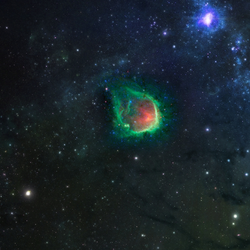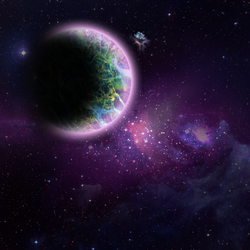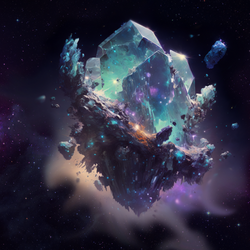More actions
No edit summary |
No edit summary |
||
| Line 8: | Line 8: | ||
The Father is a so-called Elemental Celestial, meaning it causes some unexplained effect on those who look at it. If a person is Void-touched in any way, and they peer up at The Father through a telescope, they feel an unease, a sense of dread, and an unexplained sense of doom, until they look away. As an Elemental Celestial, when The Father is high in the sky during Summer, the Void-touched claim they feel invigorated, with the culmination of this feeling cresting on the 22nd of June called Full Crimson Rise, during which the Father is exactly in front of the Red Nebula, and produces a very strong red glow that is visible to the naked eye. | The Father is a so-called Elemental Celestial, meaning it causes some unexplained effect on those who look at it. If a person is Void-touched in any way, and they peer up at The Father through a telescope, they feel an unease, a sense of dread, and an unexplained sense of doom, until they look away. As an Elemental Celestial, when The Father is high in the sky during Summer, the Void-touched claim they feel invigorated, with the culmination of this feeling cresting on the 22nd of June called Full Crimson Rise, during which the Father is exactly in front of the Red Nebula, and produces a very strong red glow that is visible to the naked eye. | ||
The Father is called Messennä in the Allorn language and | The Father is called Messennä in the Allorn language and Fuma (Emperor's Son-In-Law) in Sihai. The Father is considered a cultural icon for the Altalar, but the Sihai generally consider it a bad omen, and the worst of bad omens is the Full Crimson Rise, which the Sihai refer to as the Emperor’s Blood Day, which they consider immensely ominous. | ||
|} | |} | ||
{| | {| | ||
| Line 16: | Line 16: | ||
The Mother is a so-called Elemental Celestial, meaning it causes some unexplained effect on those who look at it. If a person is Exist-touched in any way, and they peer up at The Maiden through a telescope, they feel an unease, a sense of dread, and an unexplained sense of doom, until they look away. As an Elemental Celestial, when The Maiden is high in the sky during winter, the Exist-touched claim they feel invigorated, with the culmination of this feeling cresting on the 15th of December called Maiden’s Riposte, during which The Maiden and the whole nebula is lit up to such a degree that it is visible to the naked eye, and quite dominant even during the day as a bright glowing white-blue smear in the sky. | The Mother is a so-called Elemental Celestial, meaning it causes some unexplained effect on those who look at it. If a person is Exist-touched in any way, and they peer up at The Maiden through a telescope, they feel an unease, a sense of dread, and an unexplained sense of doom, until they look away. As an Elemental Celestial, when The Maiden is high in the sky during winter, the Exist-touched claim they feel invigorated, with the culmination of this feeling cresting on the 15th of December called Maiden’s Riposte, during which The Maiden and the whole nebula is lit up to such a degree that it is visible to the naked eye, and quite dominant even during the day as a bright glowing white-blue smear in the sky. | ||
The Maiden is called Ïevanna in the Allorn language, and Huanghou in Sihai. The Maiden is considered an extremely important symbol in Nelfin culture, at least those who worship Estellon, and center piece to many Nelfin celebrations and festivals during winter. It has no real cultural meaning to the Sihai, besides the fact that they consider The Maiden The Father’s equal, and thus ominous, but not as ominous as The Father. | The Maiden is called Ïevanna in the Allorn language, and Huanghou (Empress Consort) in Sihai. The Maiden is considered an extremely important symbol in Nelfin culture, at least those who worship Estellon, and center piece to many Nelfin celebrations and festivals during winter. It has no real cultural meaning to the Sihai, besides the fact that they consider The Maiden The Father’s equal, and thus ominous, but not as ominous as The Father. | ||
|} | |} | ||
{| | {| | ||
| Line 40: | Line 40: | ||
The object always appears on the exact same relational position next to Solfa and Aloria, meaning it is anchored more at a position in relation to Aloria. It is orbiting Solfa, but it is more accurate to say that its orbit is following Aloria, so that it is always facing Aloria. Strange mists can be seen dancing away from the object, and some observers claim they have seen the shapes of rain clouds reflected in the crystalline surface of the object. Some scholars have claimed Crystallum is the Maraya Home Fleet, but this is not true, because many observations have been made of both objects in the sky, the Home Fleet distinctly in Aloria’s cloud-web, and Crystallum far high up in the night sky. | The object always appears on the exact same relational position next to Solfa and Aloria, meaning it is anchored more at a position in relation to Aloria. It is orbiting Solfa, but it is more accurate to say that its orbit is following Aloria, so that it is always facing Aloria. Strange mists can be seen dancing away from the object, and some observers claim they have seen the shapes of rain clouds reflected in the crystalline surface of the object. Some scholars have claimed Crystallum is the Maraya Home Fleet, but this is not true, because many observations have been made of both objects in the sky, the Home Fleet distinctly in Aloria’s cloud-web, and Crystallum far high up in the night sky. | ||
Even among Maraya, to whom the object is generally attributed, there is a wild debate over what the object actually is, with some believing it was errant Maraya tech that drifted from Aloria, and others believe it to be a paradise where their people live far away from the now alien world inhabited by other Races. The object has no name in the Allorn language because they refused to categorize it as anything but an asteroid, while the Sihai call it | Even among Maraya, to whom the object is generally attributed, there is a wild debate over what the object actually is, with some believing it was errant Maraya tech that drifted from Aloria, and others believe it to be a paradise where their people live far away from the now alien world inhabited by other Races. The object has no name in the Allorn language because they refused to categorize it as anything but an asteroid, while the Sihai call it Shagua, or The Fool, to remark how it went too close to Solfa from Aloria, and is now trapped there. | ||
|} | |} | ||
==The Sun and the Moon== | ==The Sun and the Moon== | ||
The Sun and the Moon also exist as Celestial Objects (though no art is needed since everyone knows what a sun and moon look like). The Sun and Moon have important roles in a variety of cultures, the Sun for example believed to be the home of the soul of the Black Dragons called Shambaal in the Songaskian language, while the Nelfin call the Sun Majëra, which is phonetically close to mother. The Sihai refer to the Sun as | The Sun and the Moon also exist as Celestial Objects (though no art is needed since everyone knows what a sun and moon look like). The Sun and Moon have important roles in a variety of cultures, the Sun for example believed to be the home of the soul of the Black Dragons called Shambaal in the Songaskian language, while the Nelfin call the Sun Majëra, which is phonetically close to mother. The Sihai refer to the Sun as Taiyang, and it is commonly seen in symbolism, especially on their clothing. The Moon is culturally important to the Isldar, to whom the celestial is called Sina, while the wider Allorn world calls it Assenëia. The Sihai in turn call the Moon by many names, but the object in the sky is Yueliang (Moon-light), considered to have connotations of destiny and fated future lives. The Sun and the Moon behave in the same way our real life Sun and Moon do, so there is not much else to say about them. | ||
Revision as of 20:06, 23 November 2022
Astronomy, not to be mistaken for Astrology, is the science of looking at the stars and the Celestial Bodies in the starry night sky and trying to understand the place of Aloria in the universe in relation to other objects. Astronomy is a somewhat developed science, as many Races have spent centuries staring at the sky and making observations. As such, knowledge of these Celestial Bodies (a name for all entities that can be determined in space) is fairly widespread, and each Celestial Body has different names in various cultures and languages. For ease of reference this page will take the Ailor understanding as default, while offering additional translations for other Races with major investment in Astronomy. Astrology as a subset of Astronomy is usually left up to players, because horoscopes aren’t real. Star constellations are used in Aloria, they just aren’t mentioned on this page because they don’t have a widespread cultural impact.
Celestial Bodies
The Sun and the Moon
The Sun and the Moon also exist as Celestial Objects (though no art is needed since everyone knows what a sun and moon look like). The Sun and Moon have important roles in a variety of cultures, the Sun for example believed to be the home of the soul of the Black Dragons called Shambaal in the Songaskian language, while the Nelfin call the Sun Majëra, which is phonetically close to mother. The Sihai refer to the Sun as Taiyang, and it is commonly seen in symbolism, especially on their clothing. The Moon is culturally important to the Isldar, to whom the celestial is called Sina, while the wider Allorn world calls it Assenëia. The Sihai in turn call the Moon by many names, but the object in the sky is Yueliang (Moon-light), considered to have connotations of destiny and fated future lives. The Sun and the Moon behave in the same way our real life Sun and Moon do, so there is not much else to say about them.
